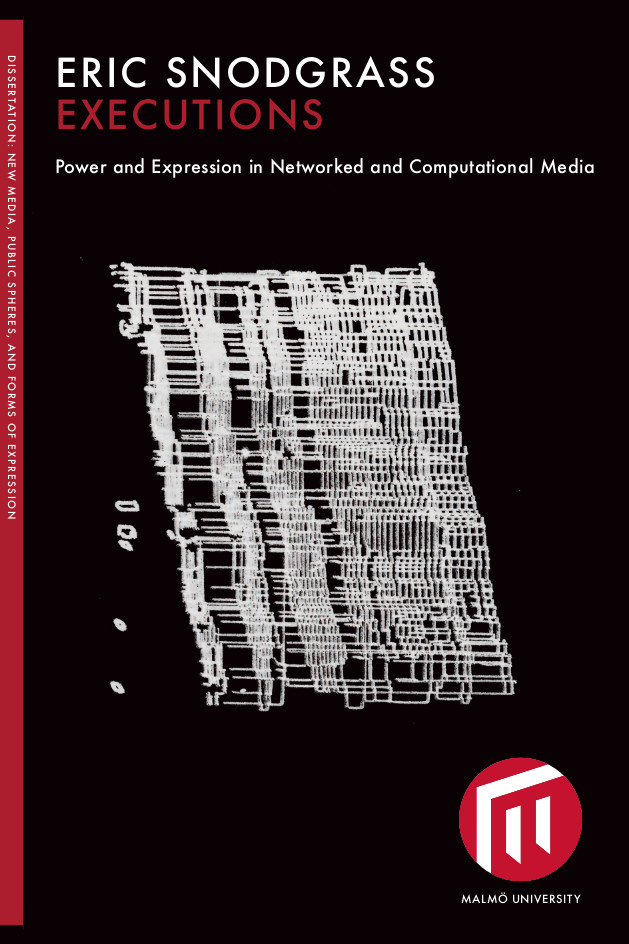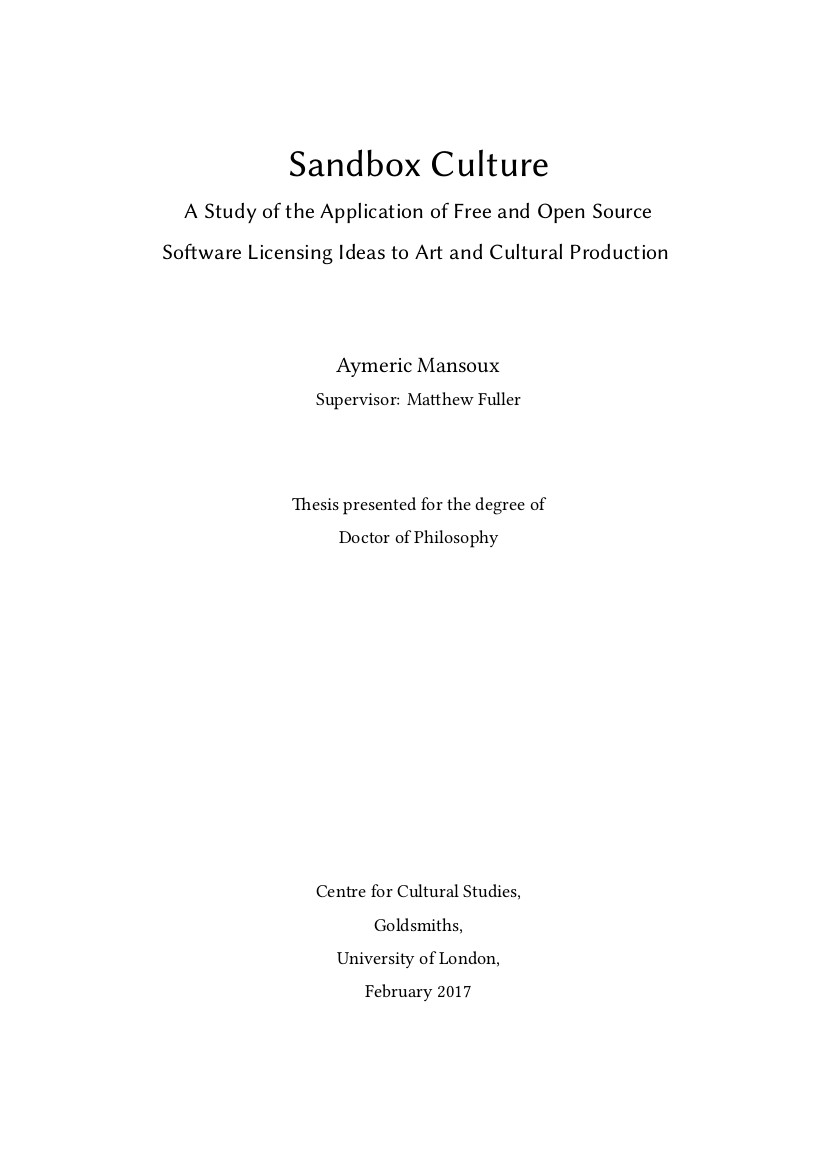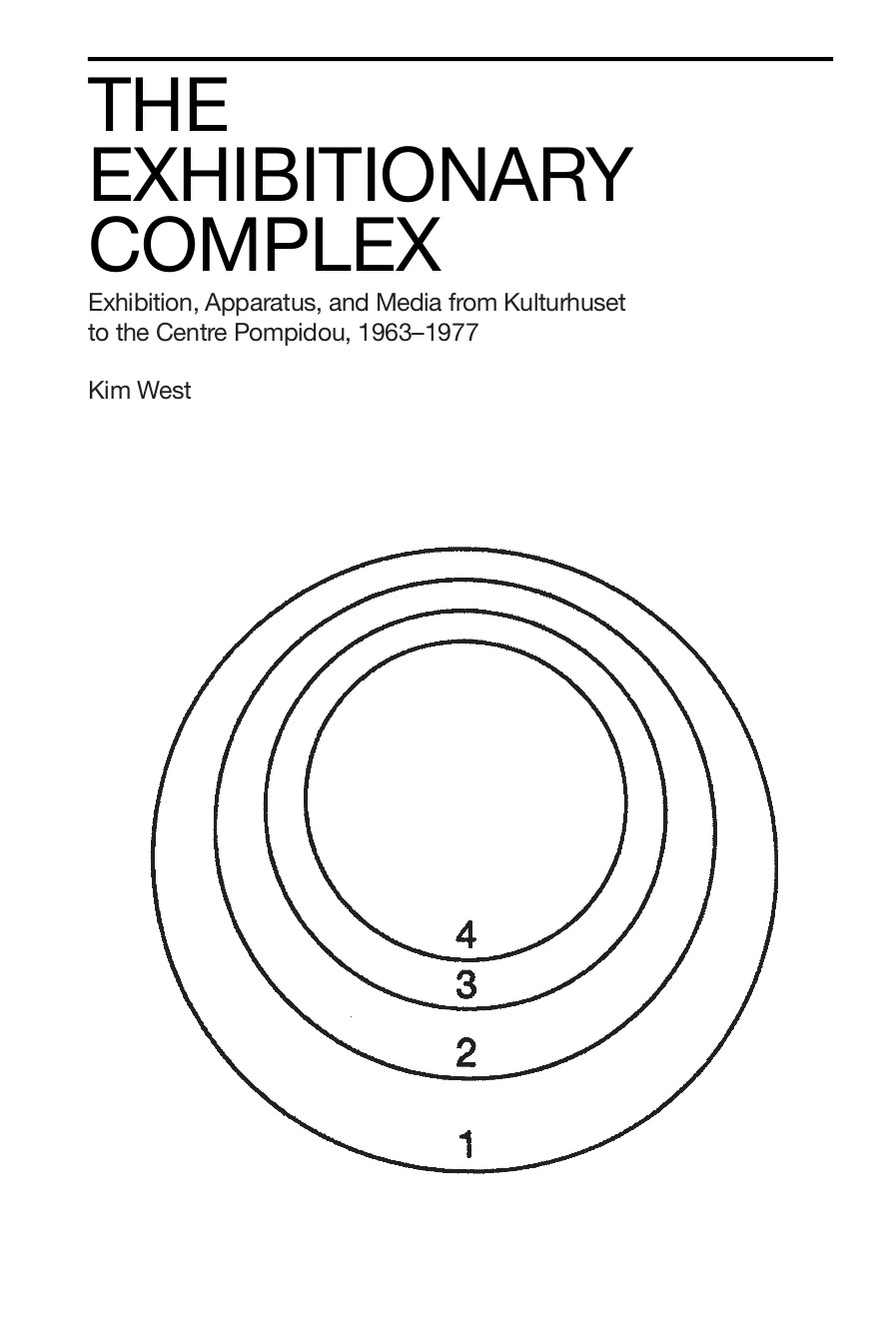Eric Snodgrass: Executions: Power and Expression in Networked and Computational Media (2017)
Filed under thesis | Tags: · computing, execution, networks, software, software studies

“This book looks at questions of power and expression as they are composed in various ways within networked and computationally-informed situations of the present. Drawing from the term as it is originally invoked in practices of computing, the research puts forward execution as a central conceptual framework for its investigations. In a computer program, a program becomes executable when it is able to execute a set of procedures within a designated set of relations and affordances. Similarly, the concept of execution developed here looks at the ongoing negotiations of various formative relations and affordances (technical, cultural, material, political) in practices of execution, describing certain notable techniques applied towards the task of making things executable.
The examples looked at include several dominant media and technology practices of the present, as well as several alternative practices that point to other possible modes of execution. In doing so, the research highlights certain politically-orientated issues involved in questions of execution, working to further develop specific approaches aimed at describing, questioning and intervening into practices of execution as they occur in the world.”
Doctoral Dissertation in Media and Communication Studies
Publisher Malmö University, Malmö, 2017
New Media, Public Spheres and Forms of Expression series, 11
Creative Commons BY-NC 4.0 International
ISBN 9789171045065
332 pages
via fcr
Aymeric Mansoux: Sandbox Culture: A Study of the Application of Free and Open Source Software Licensing Ideas to Art and Cultural Production (2017)
Filed under thesis | Tags: · agonism, copyright, cultural production, digital culture, floss, free culture, intellectual property, law, network culture, open source, social movements

“In partial response to the inability of intellectual property laws to adapt to data-sharing over computer networks, several initiatives have proposed techno-legal alternatives to encourage the free circulation and transformation of digital works. These alternatives have shaped part of contemporary digital culture for more than three decades and are today often associated with the “free culture” movement. The different strands of this movement are essentially derived from a narrower concept of software freedom developed in the 1980s, and which is enforced within free and open source software (FLOSS) communities. This principle was the first significant effort to articulate a reusable techno-legal template to work around the limitations of intellectual property laws. It also offered a vision of network culture where community participation and sharing was structural.
From alternate tools and workflow systems, artist-run servers, network publishing experiments, open data and design lobbies, cooperative and collaborative frameworks, but also novel copyright licensing used by both non-profit organisations and for-profit corporations, the impact on cultural production of practices developed in relation to the ideas of FLOSS has been both influential and broadly applied. However, if it is true that FLOSS has indeed succeeded in becoming a theoretical and practical model for the transformation of art and culture, the question remains at which ways it has provided such a model, how it has been effectively appropriated across different groups and contexts and in what ways these overlap or differ.
Using the image of the sandbox, where code becomes a constituent device for different communities to experience varying ideologies and practices, this dissertation aims to map the consequent levels of divergence in interpreting and appropriating the free and open source techno-legal template. This thesis identifies the paradoxes, conflicts, and contradictions within free culture discourse. It explores the tensions between the wish to provide a theoretical universal definition of cultural freedom, and the disorderly reality of its practice and interpretation. However, despite the different layers of cultural diffusion, appropriation, misunderstanding and miscommunication that together form the fabric of free culture, this dissertation argues that, even though feared, fought, and criticised, these issues are not signs of dysfunctionality but are instead the evidence of cultural diversity within free culture. This dissertation will also demonstrate that conflicts between and within these sandboxes create a democratic process that permits the constant transformation of the free and open source discourse, and is therefore something that should be embraced and neither resisted nor substituted for a universal approach to cultural production.”
Includes an anthology of proto-free culture licenses, 1998-2002 (pp 382-452).
PhD Dissertation
Supervisor: Matthew Fuller
Publisher Centre of Cultural Studies, Goldsmiths, University of London, 2017
xxxviii+486 pages
via author
Kim West: The Exhibitionary Complex: Exhibition, Apparatus and Media from Kulturhuset to the Centre Pompidou, 1963-1977 (2017)
Filed under thesis | Tags: · aesthetics, apparatus, art history, exhibition, information, media, museum, networks, theory

This doctoral thesis “studies the new Information Center model of the art museum that was developed by a group of artists, curators, architects, and activists connected to Moderna Museet in Stockholm between the mid-1960s and the mid-1970s. Through close readings of Moderna Museet’s unrealized Kulturhuset project, and a series of related attempts at rethinking the exhibition and the museum in relation to new information technologies, systems, and networks, it traces the origins, the critical implications, and the effects of this model, according to which the museum should function at once as a catalyst for the active forces in society, a vast experimental laboratory, and a broadcasting station.
In this study, the museum is understood as an exhibitionary apparatus, the specific characteristics of which are configured in relation to other apparatuses for display, distribution, and interaction, which together form an exhibitionary complex, caught in a process of gradual integration with the expanding network of cybernetic media. The study asks under what conditions the exhibitionary apparatus might preserve its particular modes of social and aesthetic experience, while acting as a transformative force on and through the new information environments.”
PhD dissertation in Aesthetics, School of Culture and Education, Södertörn University
Publisher Södertörn University, Stockholm, 2017
Open access
ISBN 9789187843761
359 pages
Review: Anders Kreuger (Kunstkritikk, 2017).
Comment (0)
